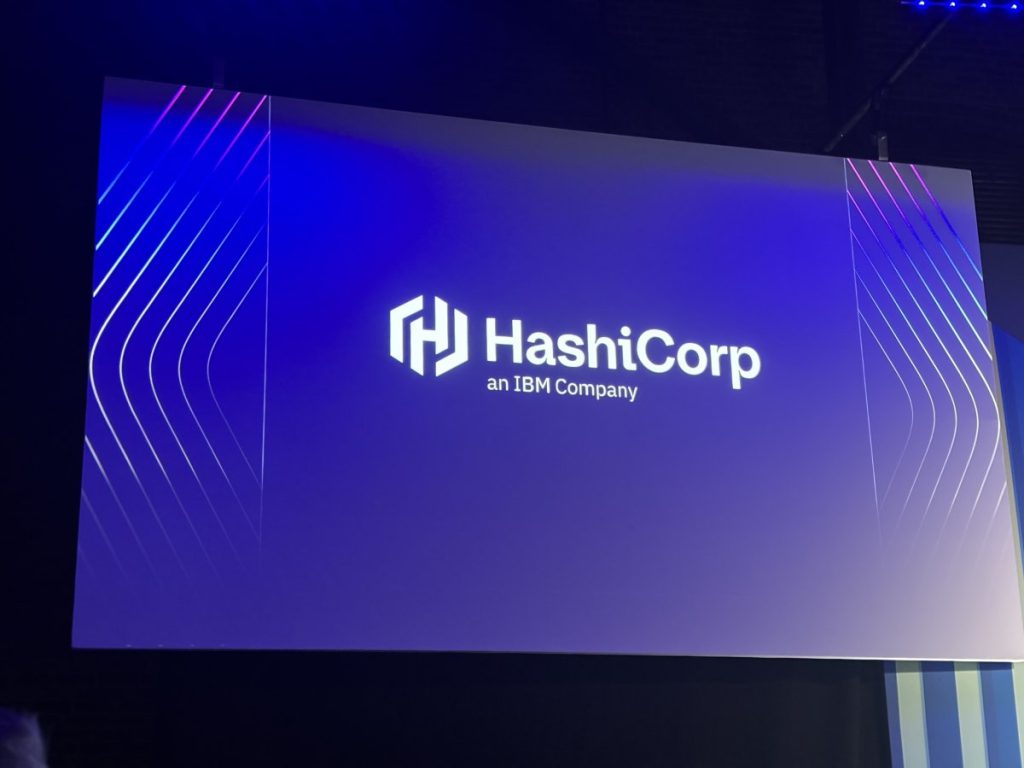IBM acquires HashiCorp: Terraform and Ansible to work together
Ansible is the most widely used tool for the automated setup of IT infrastructure and comes from Red Hat. Terraform is the tool of choice in many organizations for provisioning the same infrastructure, and in many places both tools work side by side. Since IBM completed the purchase of Terraform publisher HashiCorp in February, as announced a year ago, both have been part of the Big Blue group –, raising hopes among users for better integration of the two worlds. At the European user conference HashiDays in London, CTO and HashiCorp co-founder Armon Dadgar spoke for the first time about how Ansible and Terraform will work together in the future and how HashiCorp will continue within the IBM structure.
The brand remains
IBM is handling the HashiCorp brand in much the same way as it once did with Red Hat: the independence remains, the logo has merely been supplemented with the information “An IBM company”. Tools such as Terraform, Vault, Nomad, Packer, and Consul will continue to be developed within the HashiCorp structure. Although IBM offers its cloud infrastructure, a move of the hosted HashiCorp Cloud Platform (HCP) to the “IBM Cloud” is not currently on the agenda, as company representatives explained in an interview with heise online in the run-up to HashiDays.
Terraform meets Ansible
HashiCorp CTO Armon Dadgar has big plans for the integration of Terraform into the IBM ecosystem, but it still seems too early to make any concrete announcements. The companies were only able to finalize the deal in February after the competition authorities also agreed. However, the medium-term goal is already clear: Terraform and Ansible are to remain as two tools because they have different strengths. Terraform is a good tool for provisioning infrastructure and poor for automated configuration. With Ansible, it’s the other way around, as Armon Dadgar candidly explained in a conversation before the conference. This is not a problem because both are developed for their respective tasks.
That is why the focus is on better integrations: In the future, Ansible should receive information about the Terraform state and be activated via hooks from Terraform. This becomes very concrete with an example: Terraform orders new servers from a cloud provider, Ansible learns of their existence via the state, knows their addresses, integrates them into the inventory and starts a playbook that sets them up. Conversely, Ansible should trigger Terraform when a configuration step needs to trigger changes to the infrastructure. This could be seen in action as early as fall 2025.
There are no plans to merge the user interfaces for Ansible: Red Hat Ansible Tower and HCP Terraform will continue to coexist. The IBM subsidiary also has no news regarding the Terraform license. For now, there appears to be no plans to return to an open-source license. In 2023, two years after the IPO, HashiCorp changed the license from the Mozilla Public License v2.0 (MPL 2.0) to the Business Source License. This resulted in the fork OpenTofu, which was later adopted by the Linux Foundation.
Cloud meets mainframe
Obviously, a perennial favorite from IBM’s product portfolio should not be missing at the conference of an IBM subsidiary: the mainframe IBM Z. In the future, Terraform, Vault and Nomad are to work together with the mainframe. Regardless of the mainframe, HashiCorp also emphasized that it is focusing on on-premise installations and hybrid environments and not exclusively on public cloud infrastructures.
With the acquisition of HashiCorp by IBM, the company also views the mainframe as part of a hybrid cloud infrastructure.
(jam)
Don’t miss any news – follow us on
Facebook,
LinkedIn or
Mastodon.
This article was originally published in
German.
It was translated with technical assistance and editorially reviewed before publication.
Dieser Link ist leider nicht mehr gültig.
Links zu verschenkten Artikeln werden ungültig,
wenn diese älter als 7 Tage sind oder zu oft aufgerufen wurden.
Sie benötigen ein heise+ Paket, um diesen Artikel zu lesen. Jetzt eine Woche unverbindlich testen – ohne Verpflichtung!

